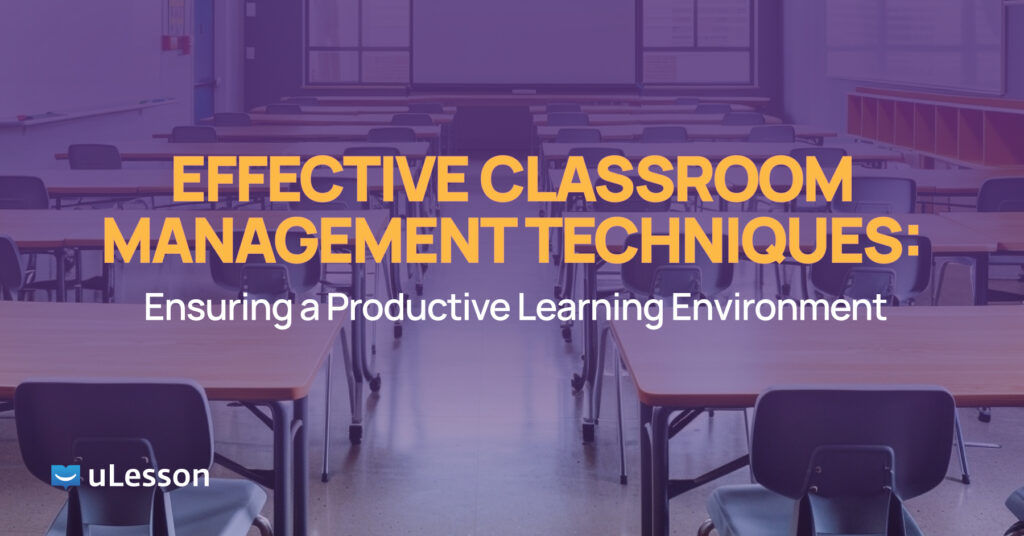Effective classroom management techniques are crucial for creating a conducive learning environment where both educators and students can thrive. This guide explores strategies that educators can implement to foster better discipline, engagement, and academic success in their classrooms. Whether it’s your first day or your 20th year, this guide will prove helpful to you and your network of educators.
7 Effective Classroom Management Techniques
Setting Clear Expectations
One of the fundamental aspects of effective classroom management is setting clear expectations from the outset. Clearly outline rules, routines, and academic goals to establish a structured environment. This provides students with a framework within which they can understand what is expected of them.

Practical Step: Create a set of classroom rules collaboratively with your students at the beginning of the school year. You can also revisit them each week to ensure they remain top of mind for both you and your students. This fosters a sense of ownership and ensures that everyone understands and agrees with the expectations.
Establishing Positive Relationships
Building positive relationships with students is essential for effective management. When students feel respected and valued, they are more likely to follow rules and engage positively in classroom activities.
Practical Step: Take time to get to know each student individually. Use their names frequently, show interest in their lives outside of school, and provide positive reinforcement for good behaviour and academic achievements.
Using Proactive Discipline Strategies
Proactive discipline strategies focus on preventing misbehaviour rather than simply reacting to it. By structuring lessons and activities to keep students engaged, educators can reduce disruptions and maintain a productive learning environment.
Practical Step: Implement strategies such as interactive lessons, group work, and hands-on activities that encourage student participation and minimise boredom or off-task behaviour.

Consistency in Classroom Management
Consistency is key to effective classroom management. Students thrive when they know what to expect and can rely on consistent routines and consequences for their actions.
Practical Step: Establish consistent routines for daily activities, transitions between lessons, and classroom procedures. Be fair and predictable in enforcing rules and consequences to create a sense of stability.
Encouraging Active Engagement
Engaged students are less likely to be disruptive. Encourage active participation by using a variety of teaching methods that cater to different learning styles and interests.
Practical Step: Incorporate interactive technologies, peer collaboration, and discussions into your lessons. Allow students to contribute ideas and opinions, fostering a sense of involvement and ownership in their learning.
Using Assertive Language
Assertive language helps maintain authority while still being respectful towards students. It involves clear and firm communication of expectations and consequences without resorting to aggressive or passive-aggressive tones.
Practical Step: Practice using assertive language when addressing behavioural issues or giving instructions. State expectations clearly, explain the reasons behind rules, and calmly enforce consequences when necessary.
Reflecting and Adapting
Effective classroom management is an ongoing process that requires reflection and adaptation. Regularly evaluate your strategies and make adjustments based on student responses and outcomes.
Practical Step: Schedule time for self-reflection and seek feedback from colleagues or mentors, e.g., weekly. Identify areas for improvement and implement changes gradually to continuously enhance your classroom management skills.

Conclusion
By implementing these classroom management techniques, educators can create a positive and productive learning environment where students feel motivated and supported. Consistency, proactive strategies, and positive relationships are key to fostering a classroom atmosphere conducive to academic success.
Implement these techniques consistently, and observe how they contribute to a more engaged and disciplined classroom environment. Effective classroom management not only improves student behaviour but also enhances overall learning outcomes.
What do you think about these strategies? Share it with your network.




One comment
Zaproxy dolore alias impedit expedita quisquam.